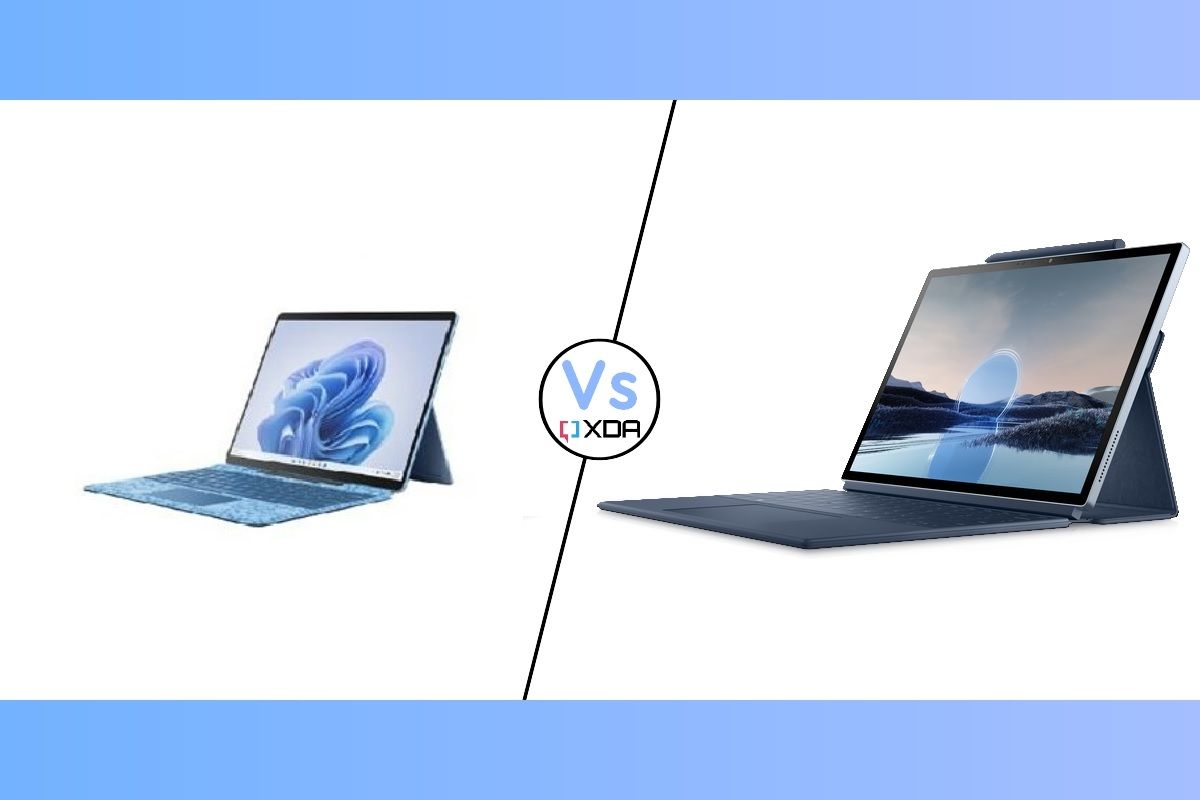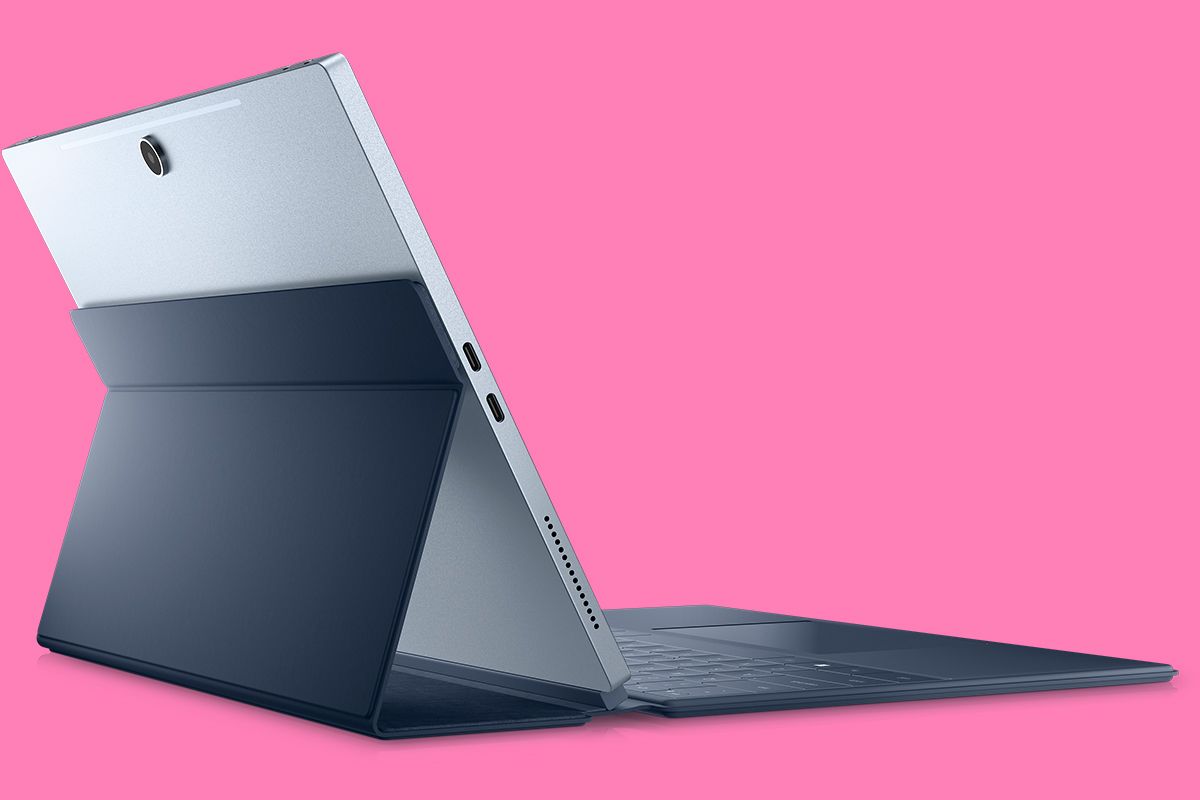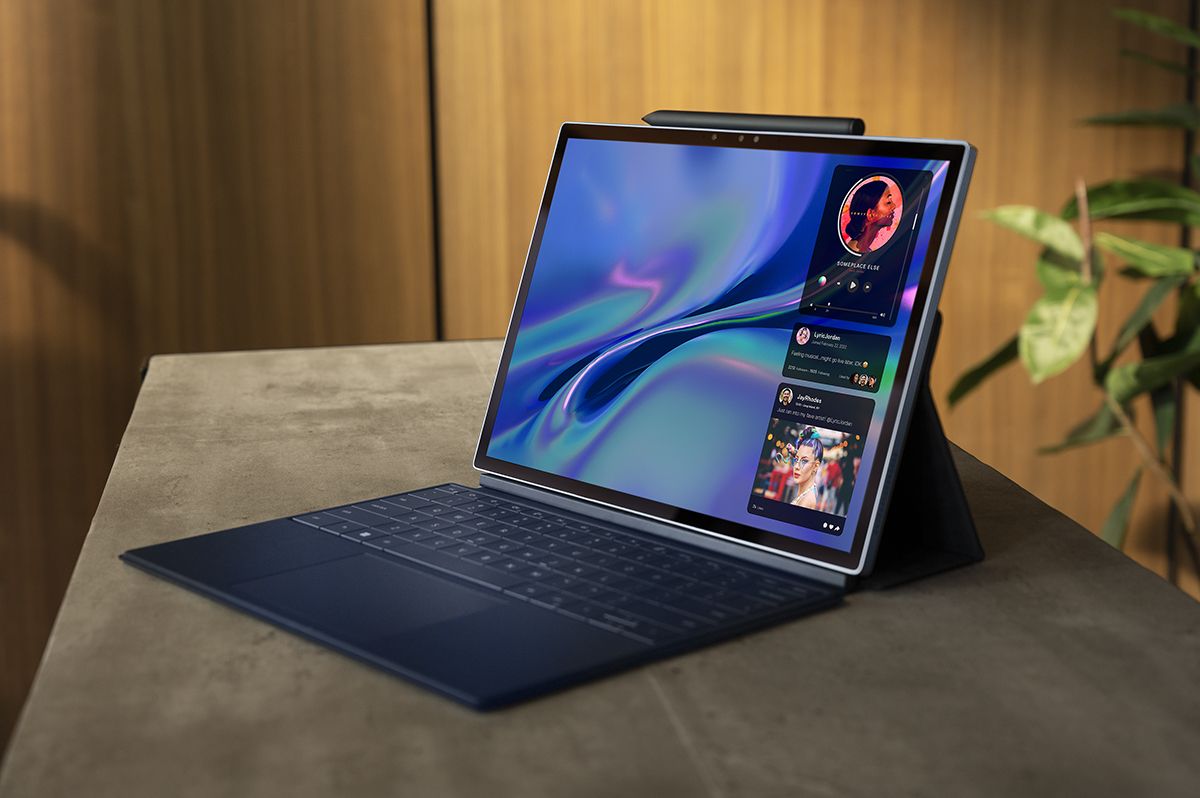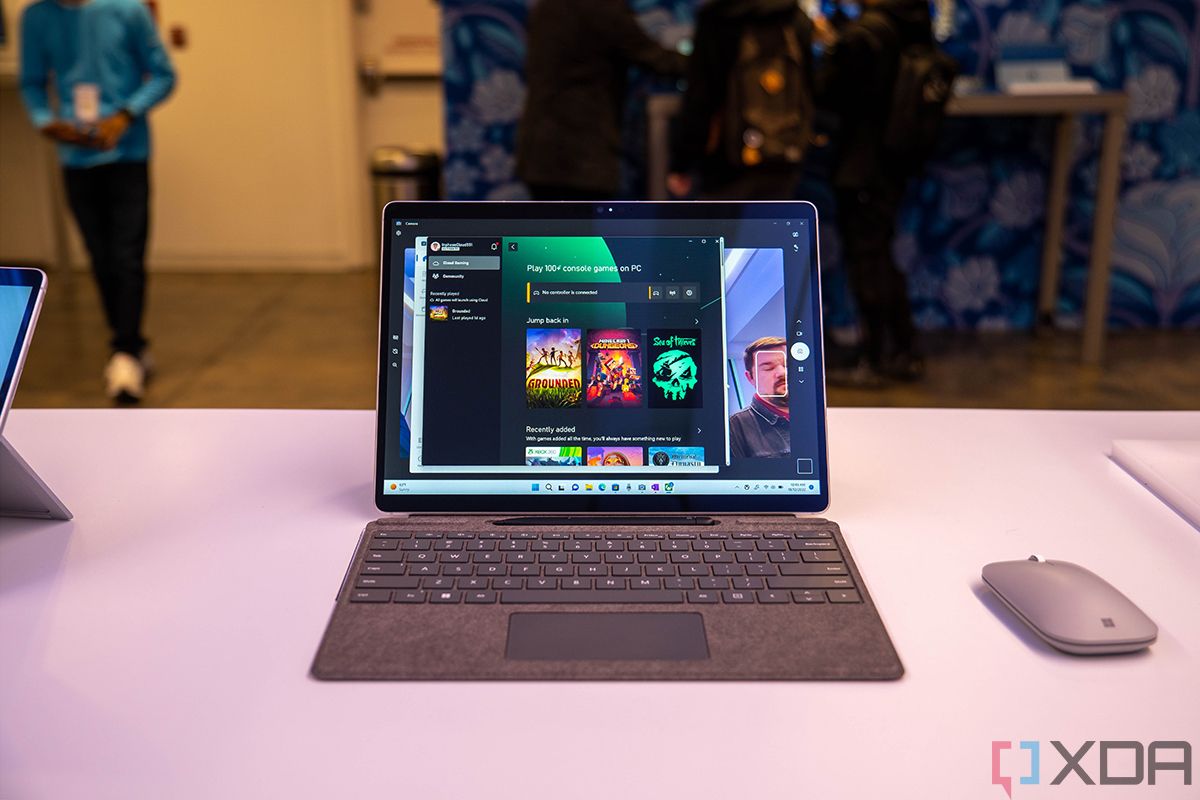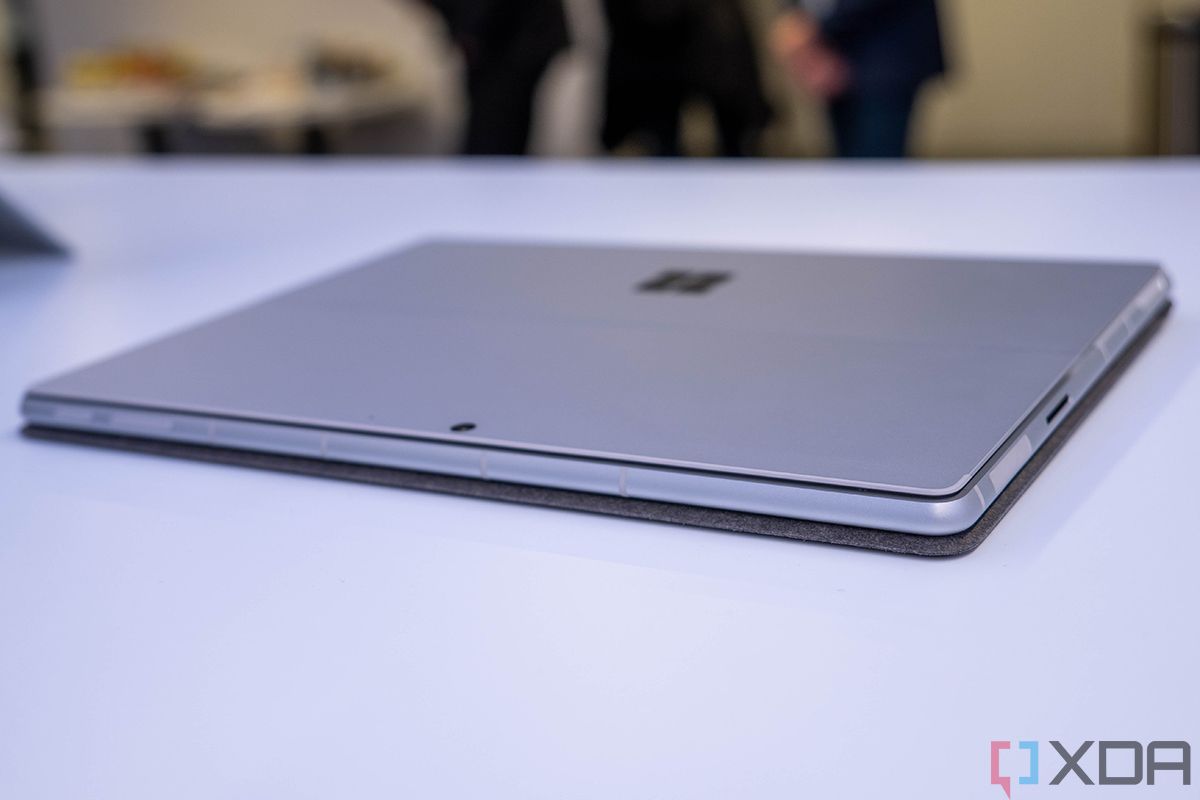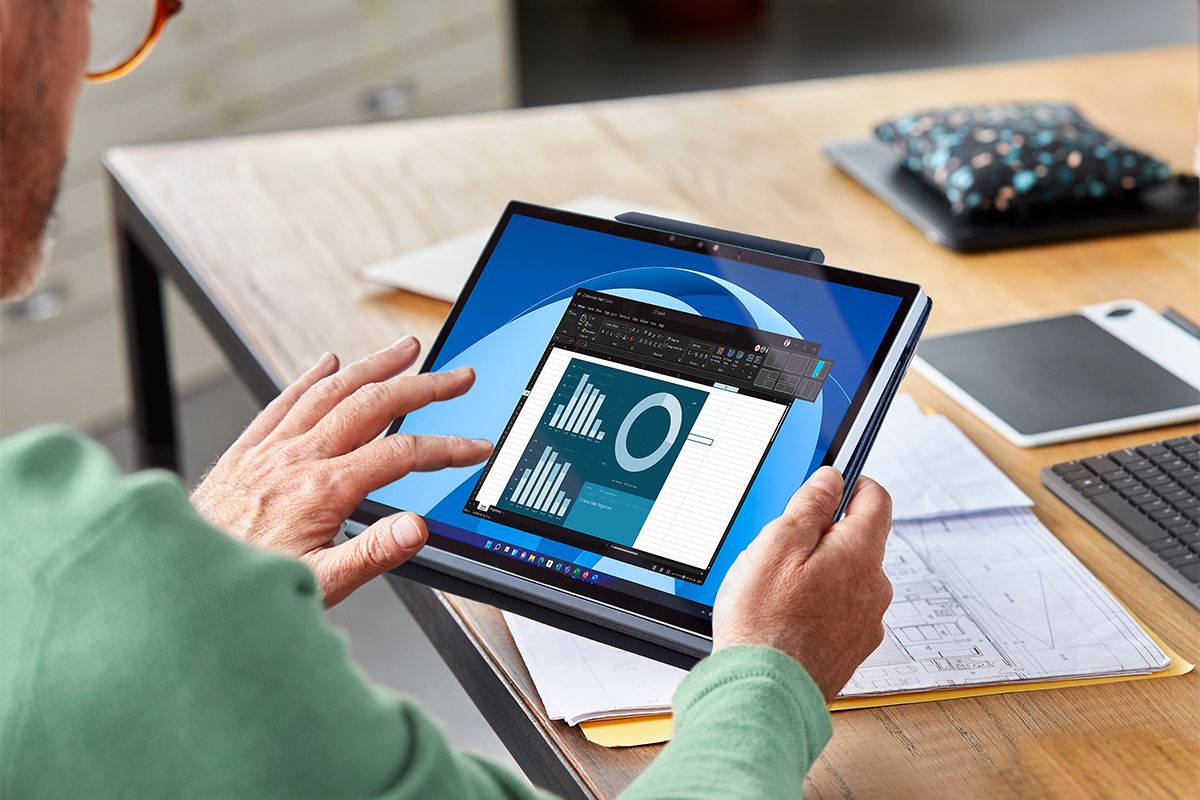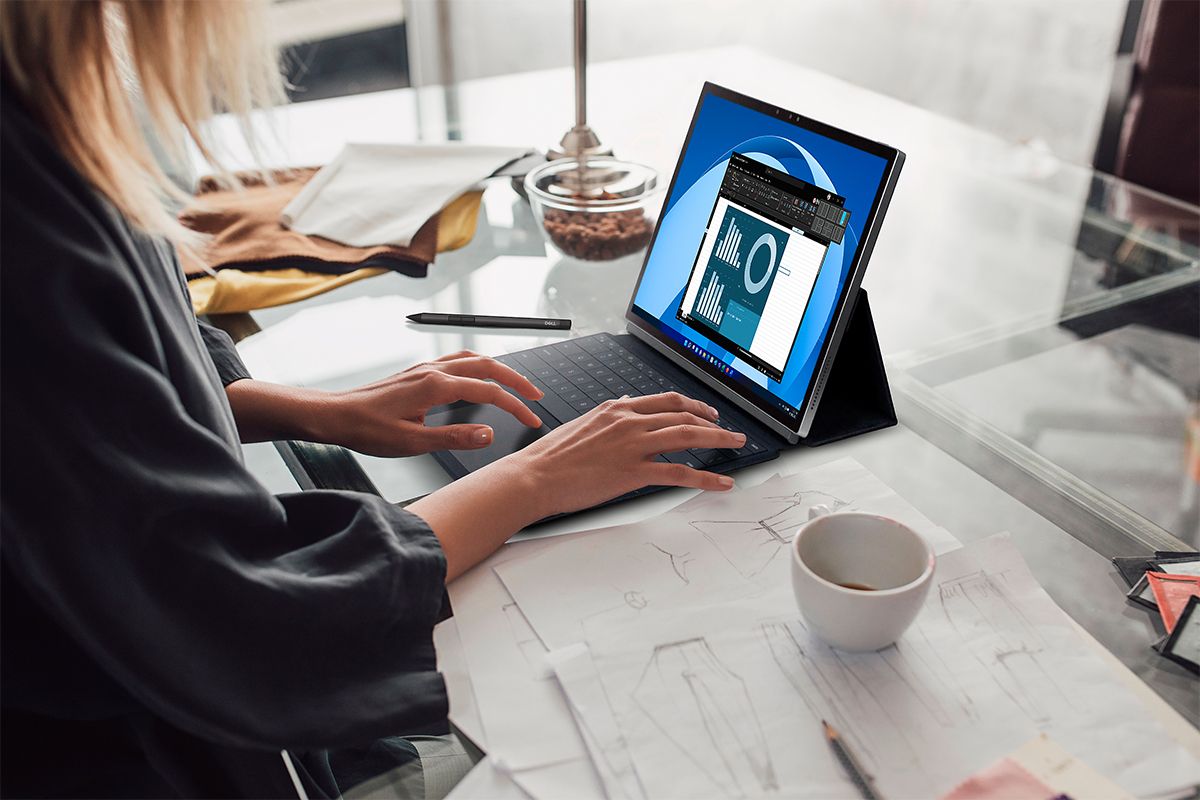Quick Links
Microsoft's Surface Pro 9 is one of the best Windows tablets that you can buy in 2022, but there's recently been a new challenger to it. It's the new Dell XPS 13 2-in-1. This new Dell 2-in-1 got a brand new redesign that brings it closer in looks and specifications to the Surface Pro 9. So that brings us to a comparison between the two devices.
In this latest guide, we'll put the two tablets head to head. We'll be looking at the overall specifications of both devices, as well as the price, display technology, and so much more. All that said, it's now time to dive a bit deeper.
Specs
|
Operating system |
|
|
|
CPU |
|
|
|
Graphics |
|
|
|
Display |
|
|
|
Storage |
|
|
|
RAM |
|
|
|
Battery |
|
|
|
Ports |
|
|
|
Audio & Mics |
|
|
|
Camera |
|
|
|
Biometric authentication |
|
|
|
Connectivity |
|
|
|
Color |
|
|
|
Size (WxDxH) |
|
|
|
Weight |
|
|
|
Price |
Starting at $999 |
Starting at $999 |
Design: The Surface Pro 9 has a built-in kickstand
Both of these devices are Windows 2-in-1 tablets. That means that they both have detachable keyboards and are plenty portable. There are a few differences between the Dell XPS 13 2-in-1 and the Surface Pro 9, though. It comes down to the Surface Pro 9 having a built-in kickstand, coming in more colors, and having a more rounded feel. Those basics explained, here's a deeper dive.
First of all, we always loved the built-in kickstand on the Surface Pro, and always will. Other 2-in-1s like the ThinkPad X1 tablet have mimicked this, but despite the big redesign from convertible to detachable, this year's Dell XPS 13 2-in-1 did not. It does get a kickstand if you buy the optional XPS Folio case, but that's an optional $100 purchase. Additionally, even if you buy the XPS Folio, it's not the same experience as the Surface Pro 9. The kickstand on the Dell is more of a sliding and magnetic folio type, so your working angles will be a bit limited. The Surface Pro 9 has a more study kickstand since it's built-in and you can pull it out with ease.
The XPS Folio, though adds a great keyboard to the XPS 13 2-in-1. Its key layout is similar to the one on the brand-new XPS 13 Plus. It's edge-to-edge and uses the same zero-lattice technology. The keycaps are also closer together than what you'd get on a Surface Pro 9 Type Cover keyboard.
The final major design note has a lot to do with the way that the XPS 13 2-in-1 is made and colored. Similar to an iPad Pro, this Windows tablet has squared-off corners. It will feel boxy in your hands. The Surface Pro 9 is more rounded and should be more comfortable to hold for that reason. Then there are the colors. You can find the Surface Pro 9 in many color options, though the 5G model is Graphite only. Colors on other Surface Pro 9 models include Platinum, Graphite, Sapphire, and Forest. The XPS comes in two colors only. The 5G model comes in Slate, and the Wi-Fi-only model comes in Sky.
We do also want to touch on the overall weight and dimensions. It's not something you'll feel or notice, but the XPS 13 2-in-1 is slightly lighter and thinner than the Surface Pro 9. Dimensions come in at 11.5 × 7.9 ×0.29 inches. That's against the Surface Pro 9's11.3 x 8.2 x 0.37 inches. Weight on the devices is 1.94 pounds on the Surface Pro 9 vs 1.6 pounds on the XPS.
Display: The Surface Pro 9 has a 120Hz display, but the XPS 13 2-in-1 has more even bezels
Although both displays on the XPS 13 2-in-1 and the Surface Pro 9 are immersive, there are a couple of areas where they differ from each other. If you like displays with high refresh rates, then the Surface Pro 9 will be better. If you like a display with even bezels, then the XPS 13 2-in-1 will be better. That's just the basics though, let's dive into it a little more, shall we?
First and foremost, the Surface Pro 9 and XPS 13 2-in-1 have the same exact display resolutions. Both are 2880 x 1920. Both are also tuned to the 3:2 aspect ratio. Regardless of which you choose, you'll enjoy these displays for productivity because of the taller 3:2 aspect ratio. The difference between the two displays are bezels, refresh rate, and pen technology.
You see, the Surface Pro 9 can hit a 120 Hz refresh rate, so things on the screen will scroll and look smoother. The XPS 13 2-in-1 maxes out with just a 90Hz refresh rate, which is still alright for most people. However, since these devices are the same price, it makes a lot more sense to get a Windows tablet with a higher refresh rate screen. It benefits you in the long run when 120Hz laptops will become more common.
The Surface Pro 9 also only works with Surface Pens that support Microsoft Pen Protocol. In addition, it supports haptic feedback with Surface Slim Pen 2, so you get a pen-to-paper feel when drawing. The pen can be housed in the keyboard, too. On the XPS 13 2-in-1, you get support for the XPS Stylus, which attaches to the top of the screen. Both styli support 4096 levels of pressure sensitivity. The Surface Slim Pen 2 is flat, though, and the XPS Stylus is more rounded. We'll let you decide which is better for your hands.
And speaking of hands. If you hold the XPS 2-in-1 or Surface Pro 9 in your hands, you'll notice that they're a bit different from each other. Going back to what we said at the top of this section, the XPS 13 2-in-1 has even bezels along the four sides of the display, similar to an iPad. On the Surface Pro 9, that's not the case. The bezels are slim on the left and right sides, but bigger on the top and bottom. This might help you handle the device better when you want to use it as a tablet only.
As for what's atop and at the back of that display, Dell's 2-in-1 has a 5MP 1080p Windows Hello webcam. On the rear, it's an 11 MP 30 FPS camera that can do 4K video. The Surface Pro 9 has a similar 1080p Windows Hello front-facing webcam, but on 5G models, the camera is capable of Windows Studio effects like blurring your background. Surface Pro 9 has a 10MP rear-facing camera, that can shoot 4K video.
Ports and connectivity: It's even, but the Surface Pro 9 has a proprietary charger
On ports and connectivity, it's an even match across both devices. The only exception is that the Surface Pro 9 has a proprietary charger with Surface Connect. Other than that, both devices come with 2 Thunderbolt 4 USB Type-C ports. Both devices also don't have a headphone jack. Dell, though, is kind enough to include a USB-C to 3.5mm headset adapter in the box, as well as a USB-C to USB-A adapter in the box.
We do like the Surface Pro 9's charger, however, as it means you can free up the USB-C ports on your device. On connectivity, these tablets both have Wi-Fi 6E support. The Surface Pro 9, though, has Bluetooth 5.1, and the XPS Bluetooth 5.2. Both also support 5G, but buying a 5G Surface Pro 9 will mean buying a model with an Arm-based chip, as we get into next.
Performance: It's a bit complicated
If you're considering the performance of the Surface Pro 9 and the XPS 13 2-in-1, then things might get a bit complicated. The XPS 13 and Surface Pro 9 are both powered by different Intel 12th-generation U-series chips. Additionally, the Surface Pro 9 also has an Arm-based model that's powered by the Microsoft SQ3 chip.
We'll start first with the Intel chips. Microsoft's Surface Pro 9 is using the 12th Gen Intel Core i5-1235U processor and the 12th Gen Intel Core i7-1255U processor. These processors have 10 cores, 2 for performance, and 8 for efficent. They also run at a base of 15 watts with a turbo boost of 55 watts. What this means is prolonged performance and power for higher-end tasks like light photo or video editing.
On the other side of things, the XPS 13 2-in-1 uses the 12th Generation Intel Core i5-1230U and the 12th Generation Intel Core i7-1250U. Yes, this is the same U-series chips that the Surface Pro 9 uses, but there's a big caveat. These CPUs have the same 2 performance and 8 efficient cores only top out at a base of 9 watts of power, though turbo boost can bring it up to 29 watts. That means it's not exactly as powerful as what you get on the Surface Pro 9 for higher-end tasks. For battery life, though, we expect the XPS to be better for that reason, especially since it has a bigger 49.5Wh battery vs the Surface Pro 9's 47.4 Wh battery.
On RAM and storage, well, these two tablets are also somewhat equal. More is always better. So the 8GB and 16GB LPDDR4x RAM on the XPS are plenty fine. The Surface Pro 9, though, kicks things up to a 32GB RAM option, but only on Core i7 models. Plus, the Surface Pro 9 is using faster LPDDR5 RAM. If you combine that with the higher-power CPU, it's hard to pass up the Surface Pro 9. As far as storage foes, the Surface Pro 9 lets you replace the SSD. It comes in sizes up to 1TB. The same also applies to the XPS 13 2-in-1, though you can't replace the storage.
The outlier in this section though is definitely the 5G version of the Surface Pro 9. It's an Arm-based computer, so the battery life will be much longer. It also should perform like the ThinkPad X13s did when we reviewed it since it's using the same base chip. A lot of apps will run emulated on the system though, so the performance might not be the best. That's the one thing to note if you buy a 5G Surface Pro 9.
Final thoughts: Buy the Surface Pro 9
We really suggest you buy the Surface Pro 9 over the Dell XPS 13 2-in-1. As this guide shows, the device is better when it comes down to the CPU, as well as the kickstand, display, and overall color choices. The XPS 13 2-in-1 is still a great system though, but it's just not as powerful, and some people might find the folio keyboard a bit limiting. Either way, you can check both out via the link below.
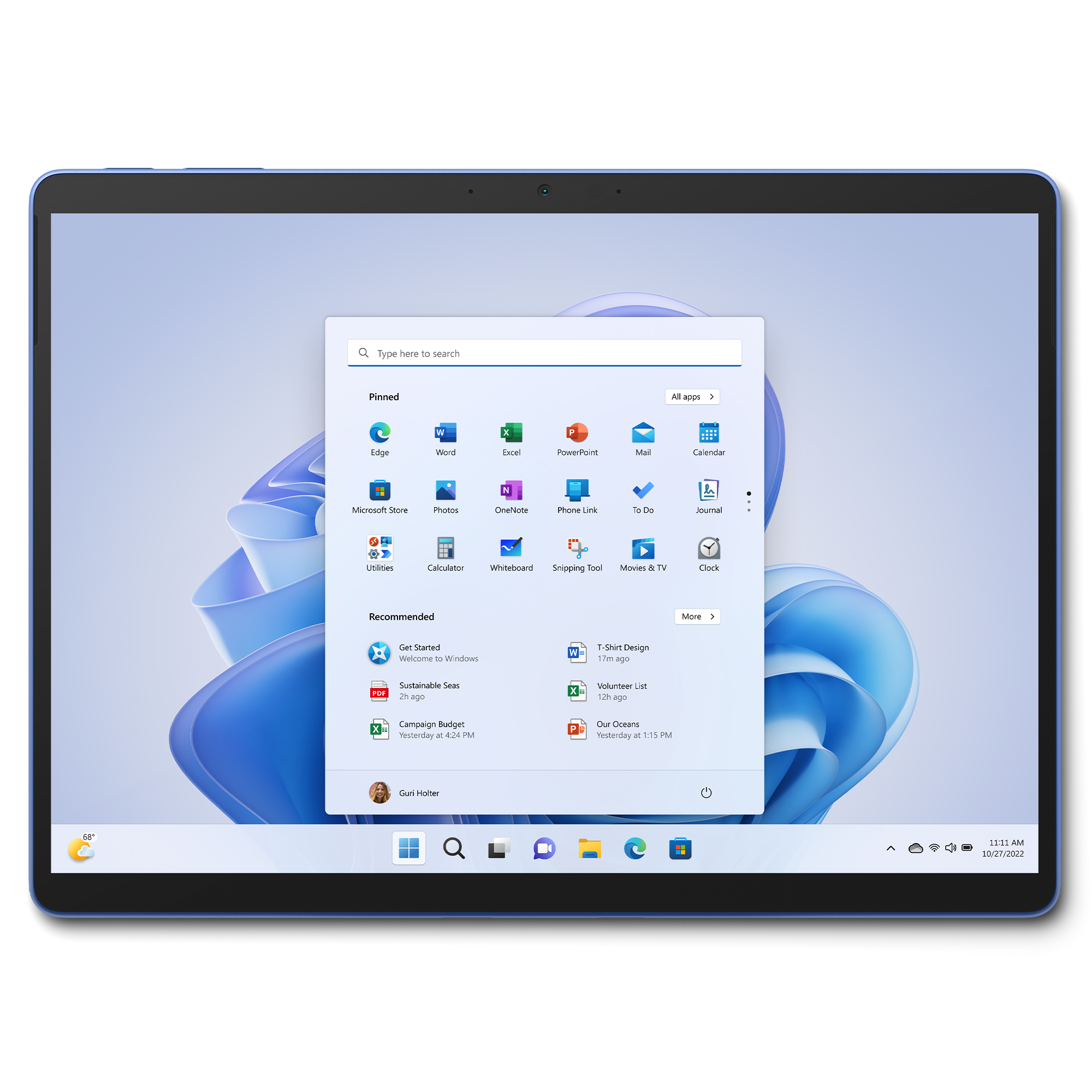
Surface Pro 9 (Wi-Fi)
The Surface Pro 9 is a top-tier Windows tablet with new Intel 12th Gen CPUs. For a first, it also comes in multiple colors.
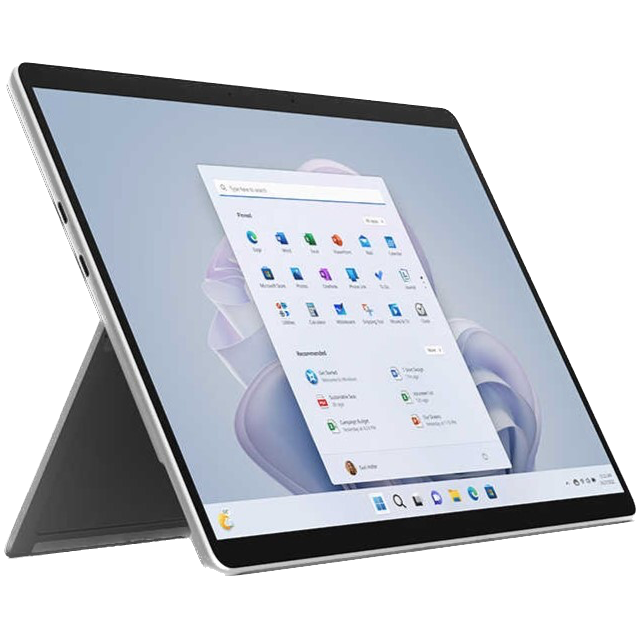
Surface Pro 9 5G
This model of the Surface Pro 9 is the Arm-based version that has 5G support and the Microsoft SQ3.
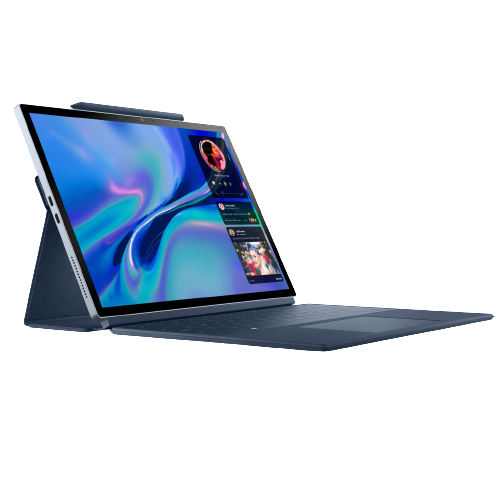
Dell XPS 13 2-in-1
The Dell XPS 13 2-in-1 is now a 2-in-1 with a detachable keyboard. It sports the newest Intel CPUs, and a great Folio keyboard.

